
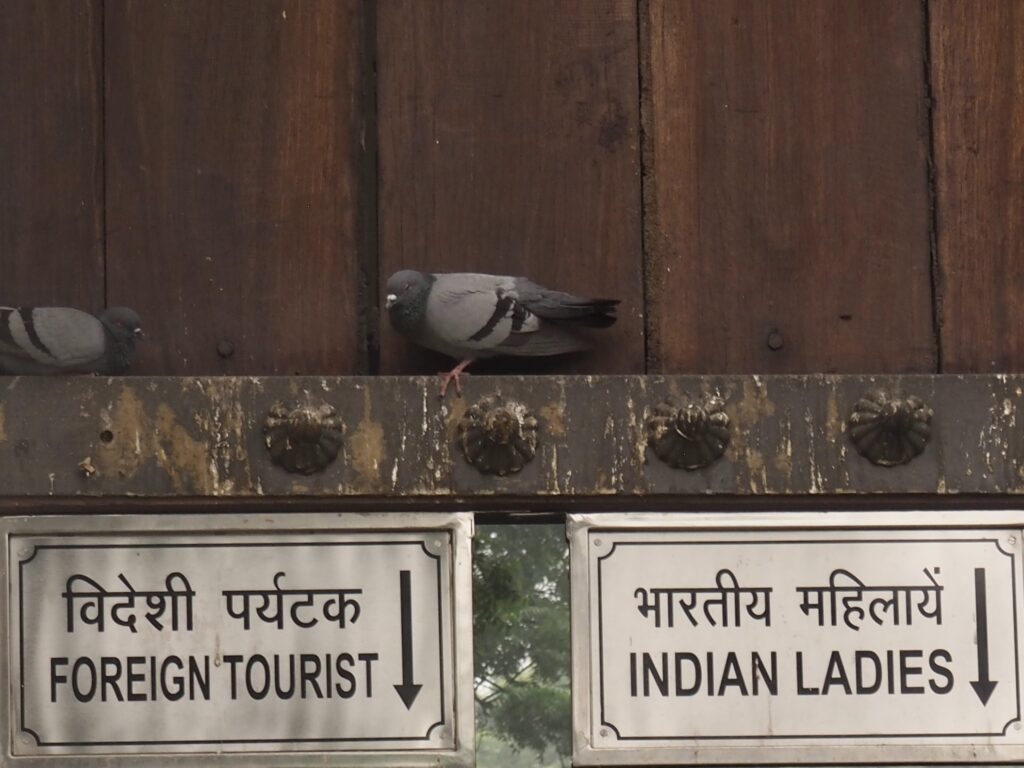

Qutub Complex

Welcome to Delhi, our port of entry in India, the seat of power for the Mughal and other Muslim Sultans and Emperors starting in the 11th and 12th centuries, the capital of British ruled India (established in the New Delhi sector) and the capital of post independence India since 1947. It also has some of the worst air quality in the world, overtopping the AirQualityIndex’s supposed ceiling of 500 consistently (where 400+ is “hazardous”), such as during our visit.
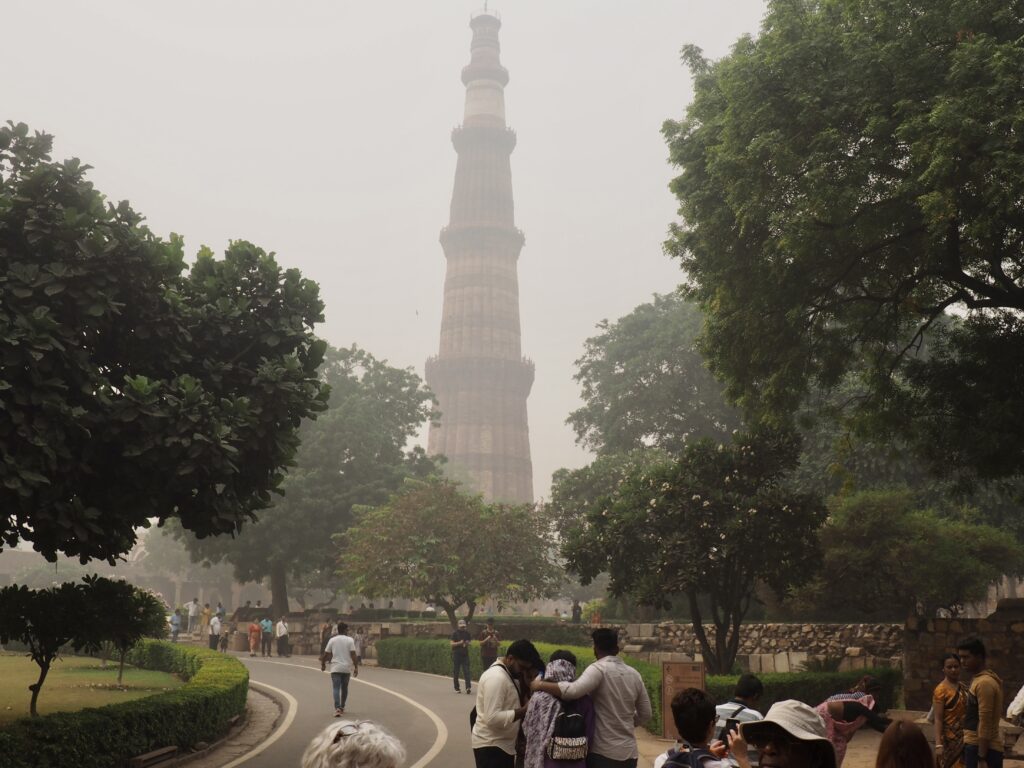
The most celebrated attraction at the complex is the very imposing and impressive minaret built in 1192 of sandstone and marble to a height of almost 240’, making it the tallest brick minaret in the world. It was a clan of Tajiks who settled in India, bringing Islam with them, who constructed the complex over a Hindu fort (with 27 temples) laid waste and converted to building materials.

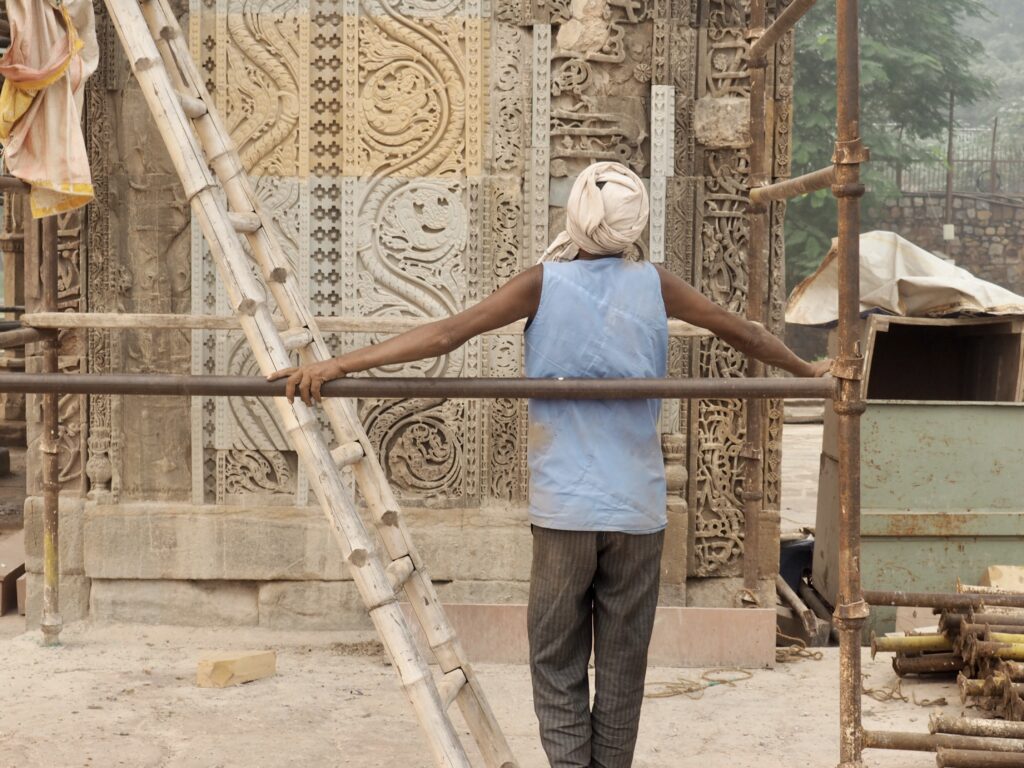
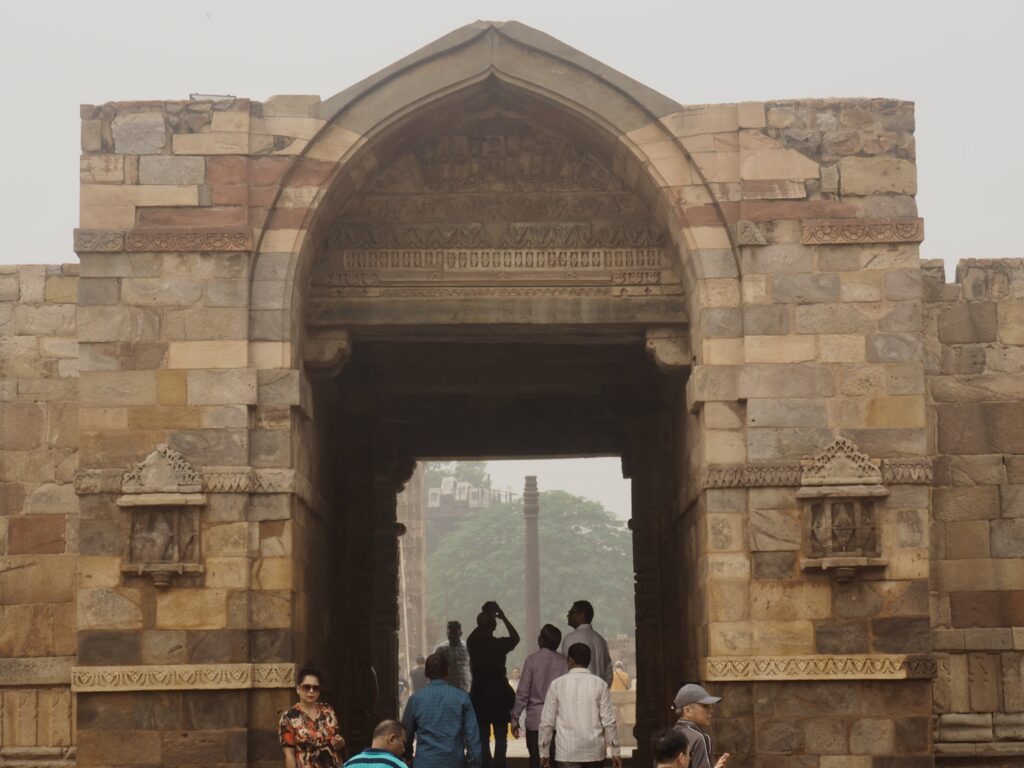
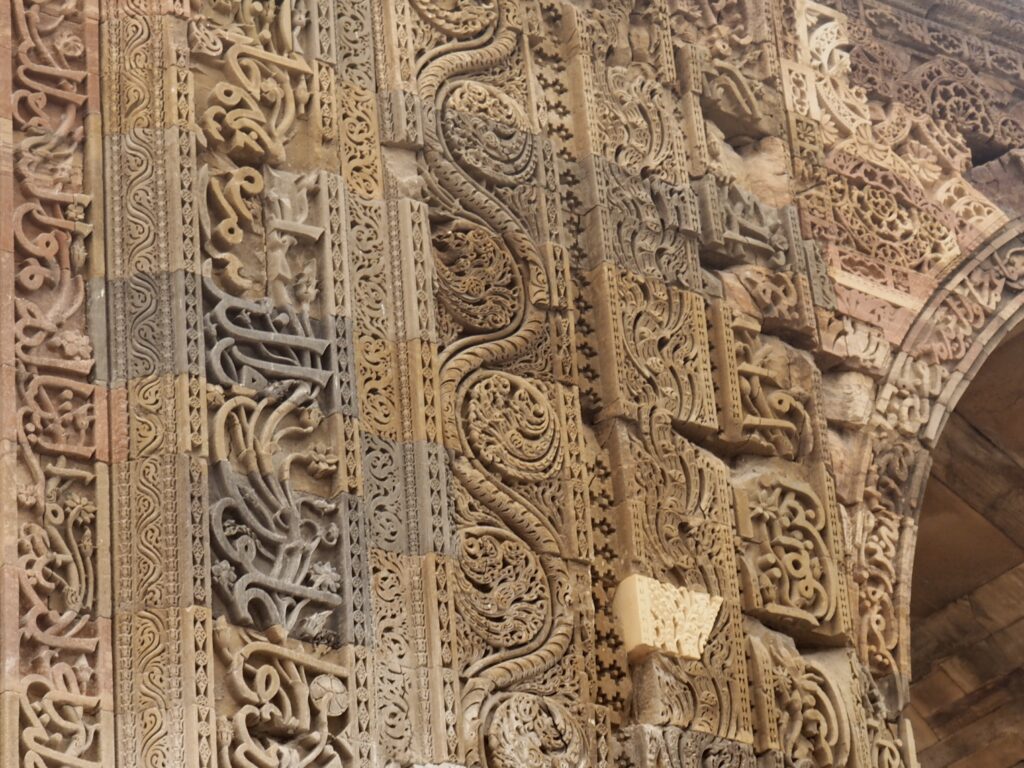


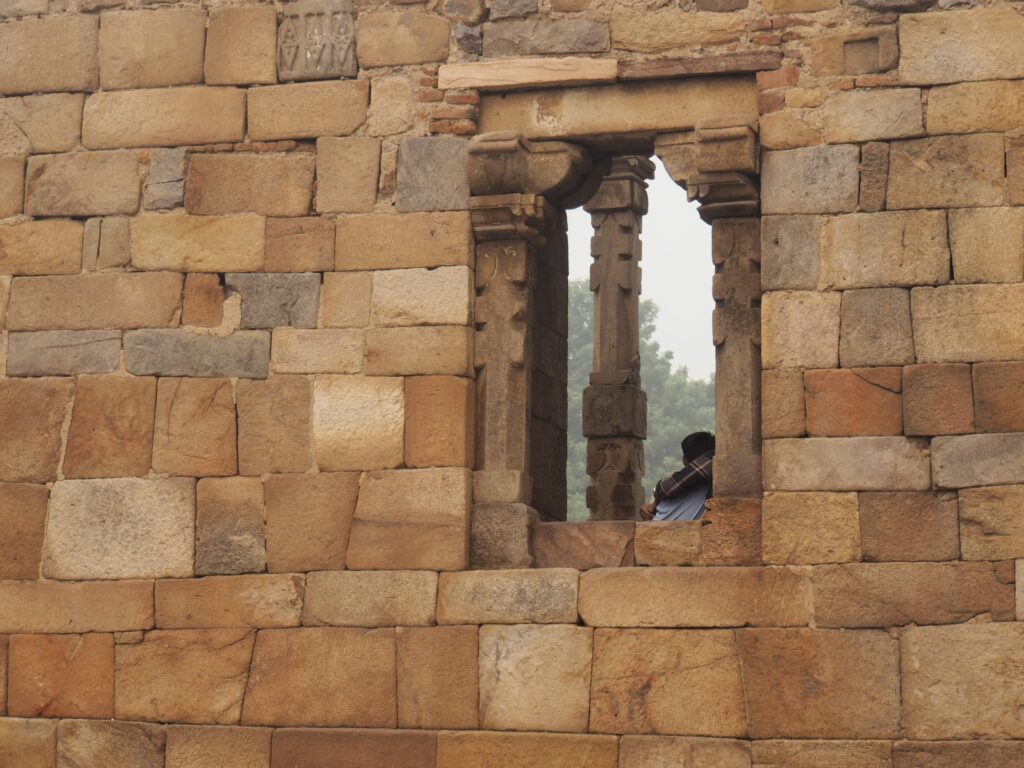
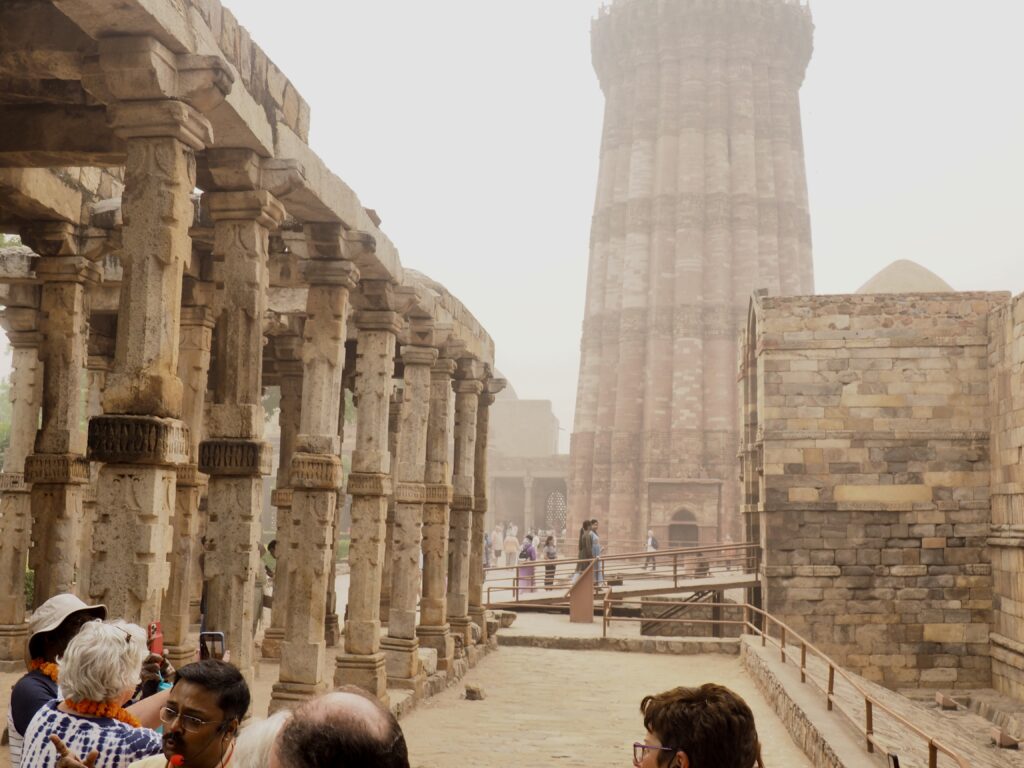
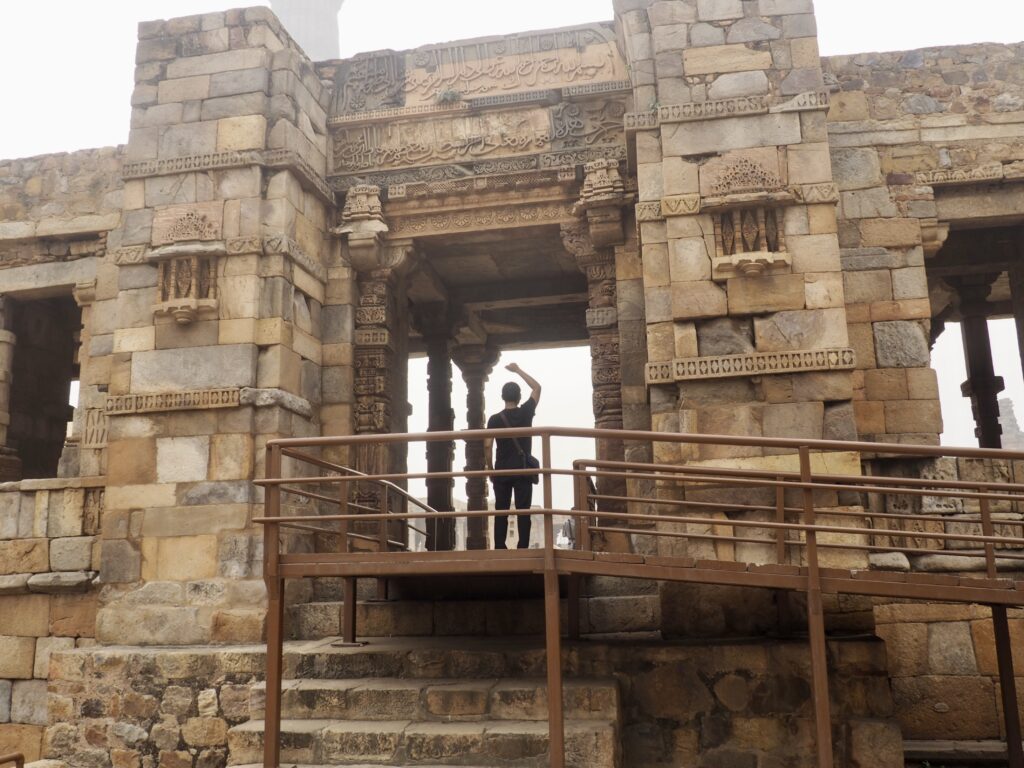

Built by a predecessor dynasty of the Mughals, the complex repeatedly reflects the partnership of Hindu laborers overseen by Islamic architects in the ornamentation and some mangled Arabic. This includes representations of nature, such as flowers and trees, not otherwise found in mosques.

What’s unusual about this pillar is not only its antiquity (4th or 5th century) and its multiple Sanskrit inscriptions along its 24’ height, but its remarkable resistance to rust. The notorious Erich van Däniken cited it as proof of the visitation of aliens in his Chariots of the Gods, although he later recanted that interpretation when shown that the ancients were simply good metallurgists.
Gandhi Smriti







We all know the story of Mahatma Gandhi, his great campaign of nonviolence and success in ridding India of the British. What eludes us is why any Indian would want him dead. In the last few months of his life, Gandhi had moved into a single small room in a rather palatial home owned by one of his admirers. The run up to and the experience of Partition was devastating for Hindus and Muslims alike, a move long fervently opposed by Gandhi. However, at the last, he relented because of his fear of even greater violence and death if the separation were not to occur. It was that reluctant assent to Partition that could not be forgiven by his assassin, who walked up to Gandhi as he was to deliver remarks in the garden, paid his respects, and shot him. To many Hindus, the dismemberment of a great nation assembled for them by the British was a tragic turn of history. Many believed that Partition would be short lived. It has now been 75 years and is highly unlikely to ever be reversed.
Gurdwara Bangla Sahib
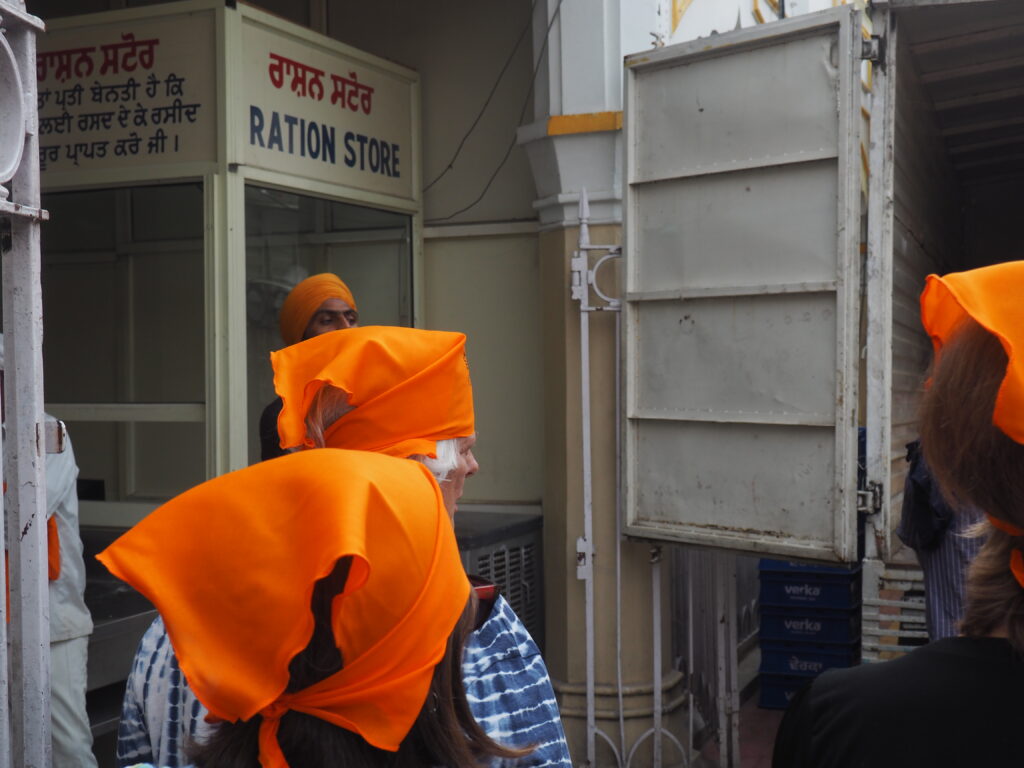
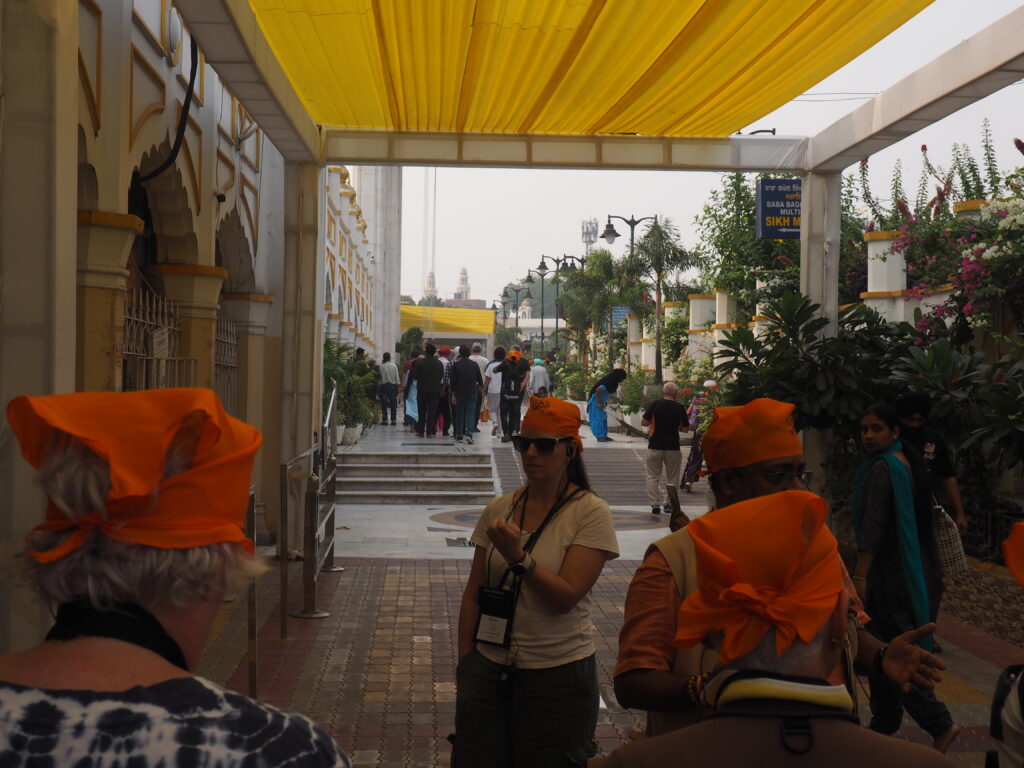
Any halfway adequate explanation of the Sikhs and Sikhism would certainly try your patience, but is well worth searching up on your own. Fortunately, we arrived in India reasonably prepared for the complexities of religion and caste or we would have been quite disoriented. In a nutshell, the Sikhs believe in the welfare of all, the radical equality of all and the obligation to serve all. That has led them to, for instance, provide certain medical services at prices even the poorest can afford (here, in Delhi) and to feed anyone and everyone who shows up at their temples (throughout the world).
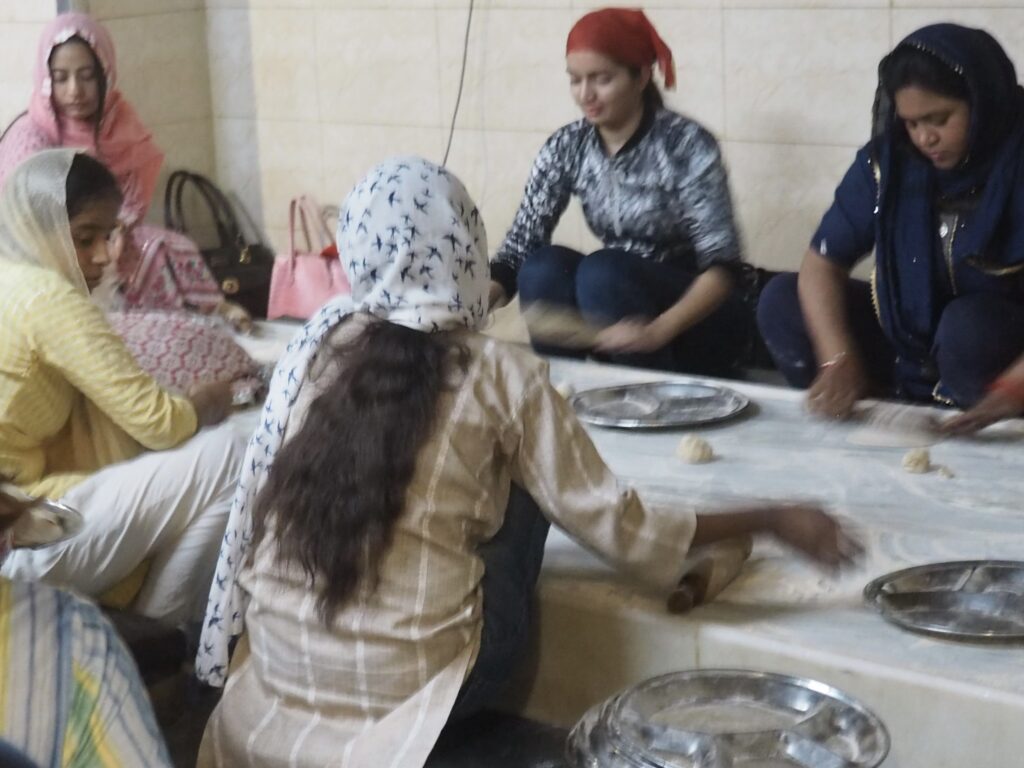

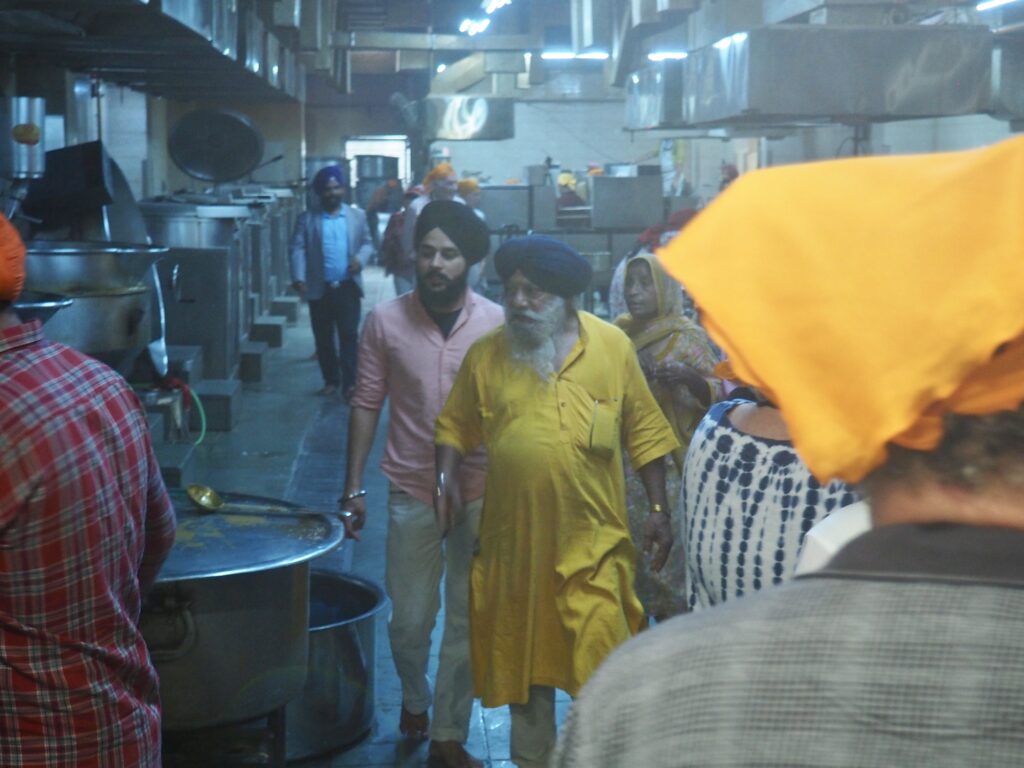
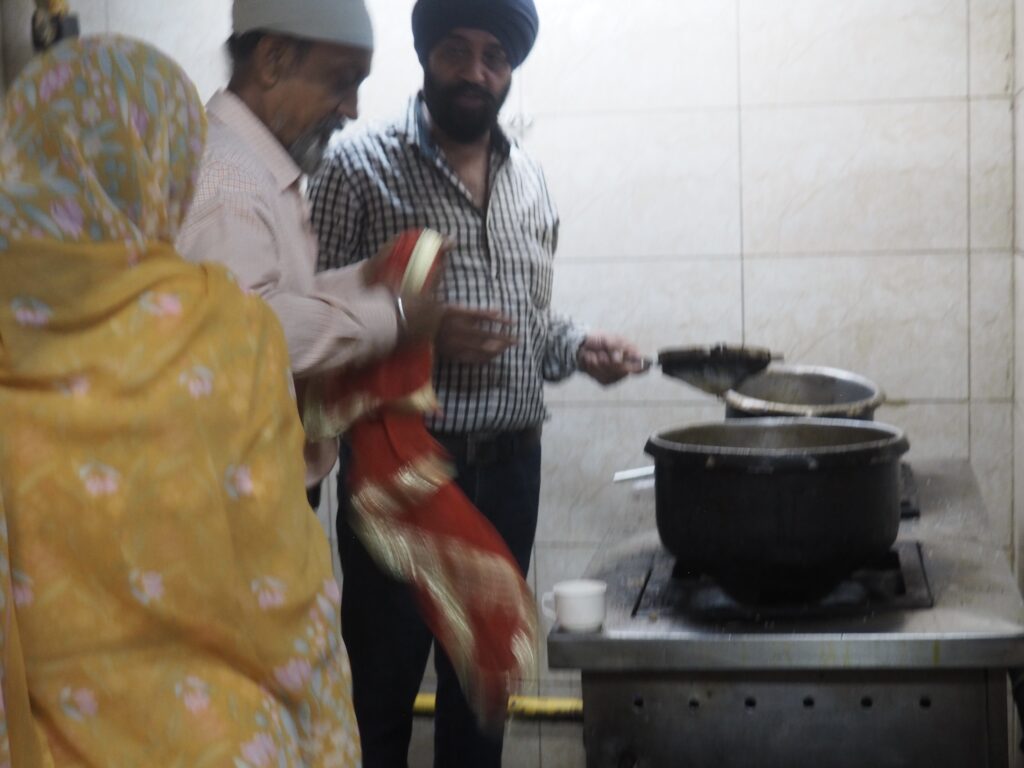
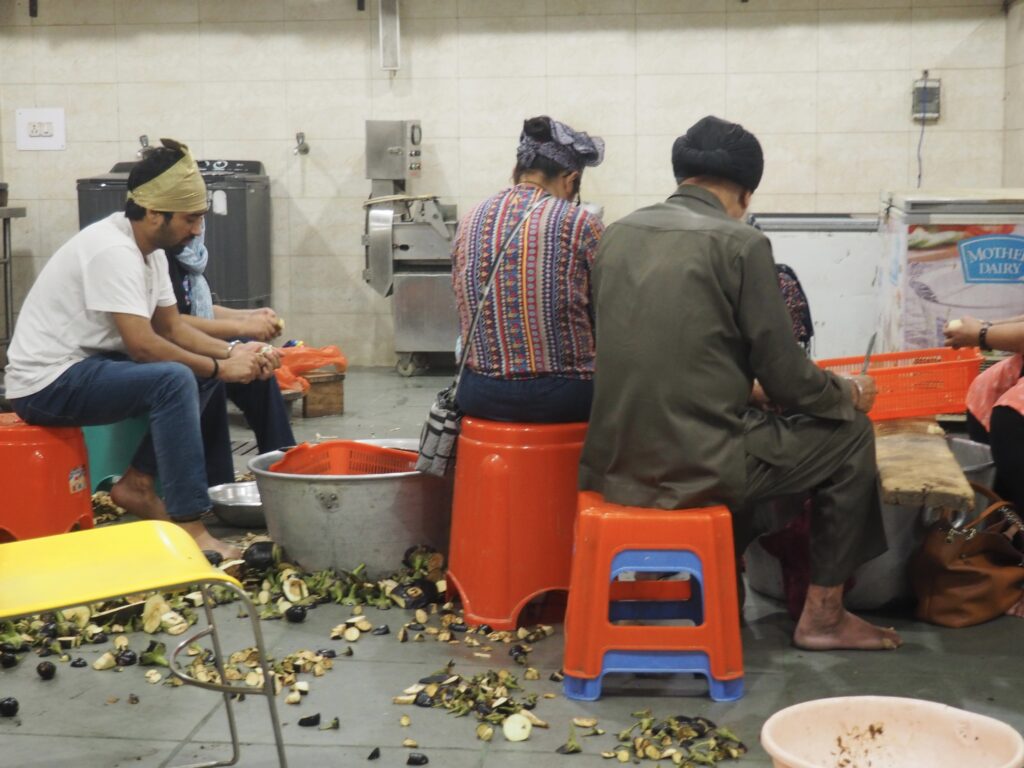
In defiance of the (very much alive and thriving) caste system, all Sikhs use the same family name (Singh or lion, a warrior caste name), although not all Singhs are Sikh. Most people working in the kitchen are, to our understanding, volunteers.
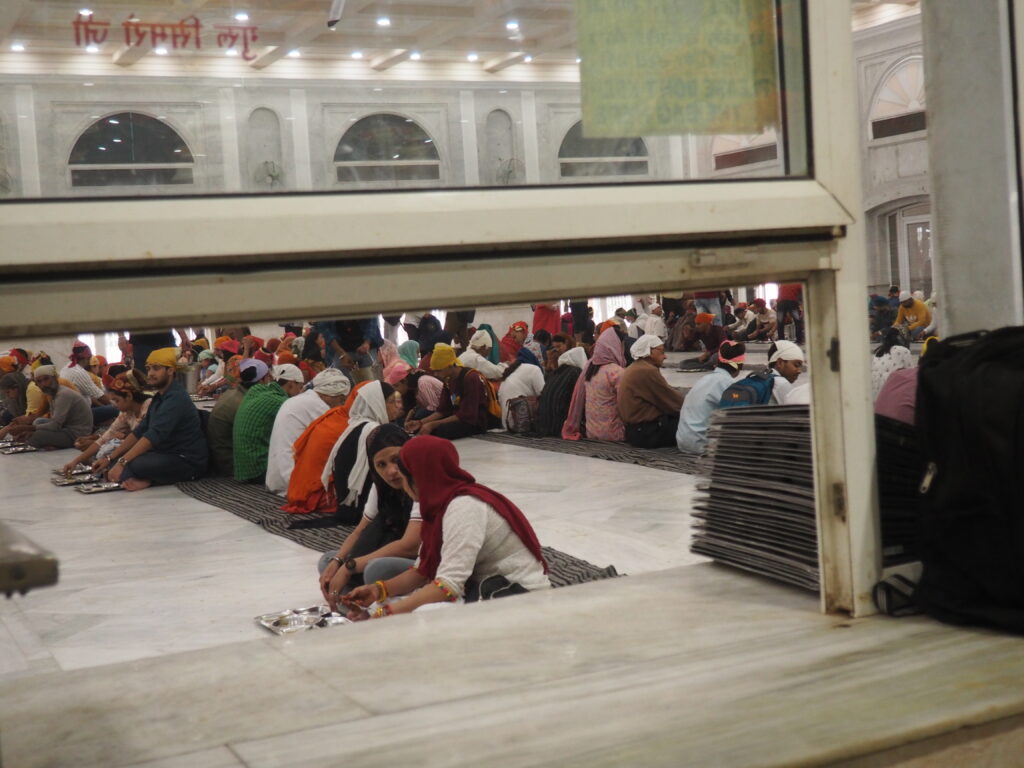
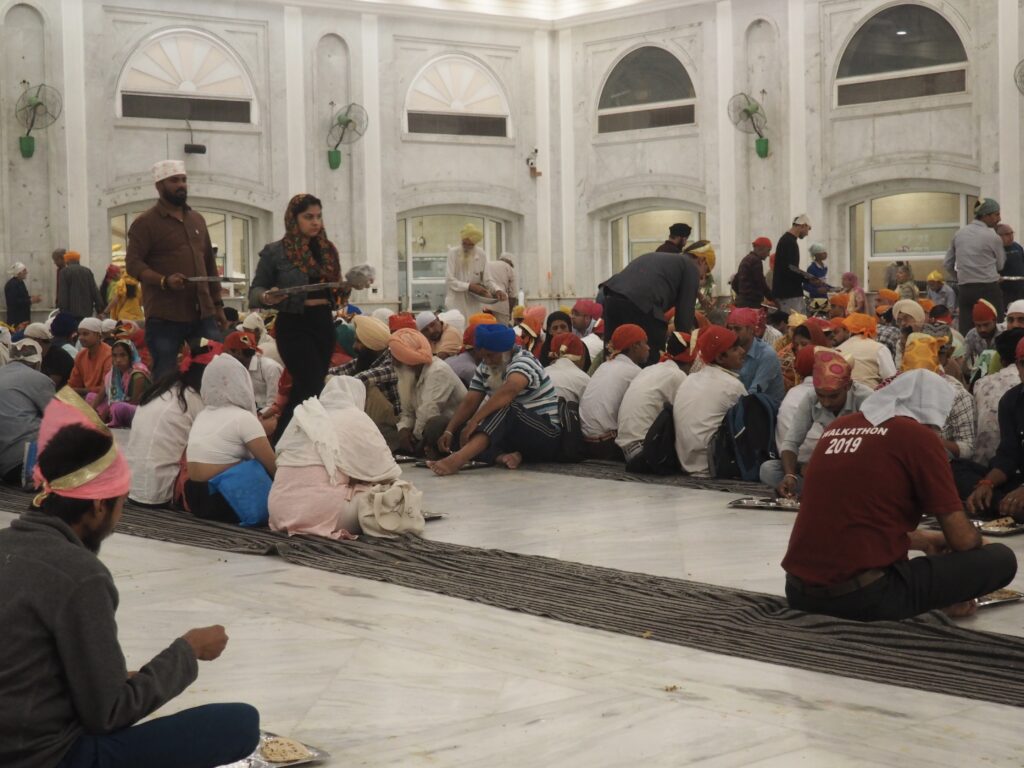
A massive number of people are served. These shots were taken a very much an off hour for eating.






After touring the kitchens, we headed to the Temple proper, trying not to slip on the marble after walking through the foot bath in our bare feet, photos not permitted. The gold dome is a marker of a Sikh temple. This particular temple is significant in the history and practice of the faith and was originally a Raja’s bungalow (the opposite of what it means in the U.S.), hence “bangla sahib.” We were getting into this solidarity of the orange head scarves and the chance to spend extended quality time with cousin Gwen, as we got ready to head back to the bus.


Did you have some of the food?
Not at the Sikh temple. Our guide was very careful where we, with our pampered western stomachs, ate. We only ate at our hotels, rather nice restaurants, or private homes.